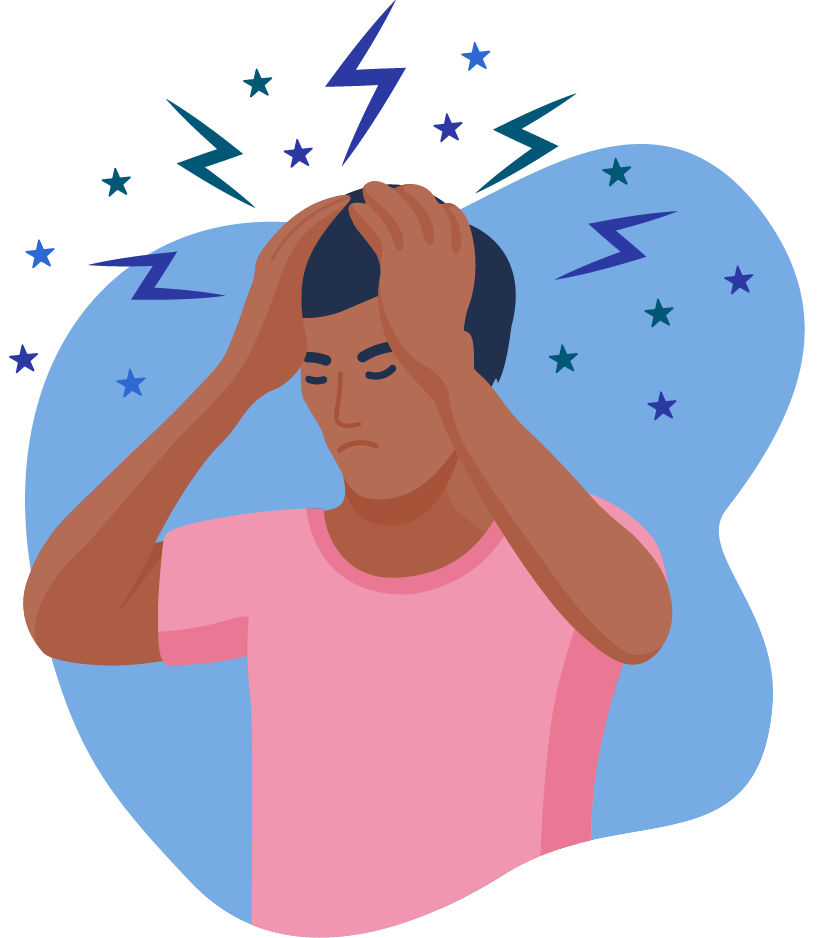More Than a Headache: Bringing Understanding and Awareness to Chronic Migraine
8 Articles


Most doctors describe migraines as having four distinct phases. However, people who get migraines do not necessarily experience all four phases as part of every migraine attack. Phases of a migraine can differ between individuals and types of migraine.
Understanding the phases of migraine can help migraineurs better manage their condition by timing treatments for maximum effectiveness.
Migraine phases
1. Prodrome
Approximately 30 to 40 percent of people who get migraines experience a prodrome phase before headaches begin. The prodrome phase can start hours or days before headache pain begins. For people who have prodromes, this phase can serve as a warning of an impending headache. The prodrome may be referred to as premonitory phase or pre-headache for this reason.
During the prodrome, migraineurs can experience a wide variety of symptoms including mood changes, gastrointestinal symptoms, and cognitive problems. Prodrome can cause:
Some people are able to avoid the headache by avoiding triggers or taking treatments during the prodrome phase.
2. Aura
Auras directly proceed migraine attacks in about 20 percent of people with migraine. Auras generally last between five minutes and one hour.
Auras involve changes in perception or neuropsychological function that can include:
3. Headache
The third phase of migraine is the headache itself. Intense head pain, vision changes, photophobia (sensitivity to light), nausea, and vomiting are among the most common aspects of the headache phase.
Read more about symptoms of migraine. Symptoms of migraine differ by type of migraine.
4. Postdrome
About 80 percent of those who get migraines experience the postdrome phase when the pain of migraine subsides. Most people feel intense fatigue during the postdrome. Photophobia may continue in this phase, and some people experience body aches. Depression and anxiety are common. Conversely, some people experience euphoria – an intense feeling of happiness and well-being – after a migraine. Some migraineurs experience cognitive symptoms such as confusion, difficulty speaking, or trouble concentrating.
Some people who get migraines describe the postdrome phase as feeling like a hangover. Postdromes can last for hours or days after a headache.
Resources
External resources
Internal resources
FAQ
When should migraine treatments be taken?
Acute migraine treatments are generally most effective when taken as early as possible in the course of the migraine. If taken early, nonsteroidal anti-inflammatory drugs (NSAIDs) such as Aspirin, Advil (Ibuprofen), and Aleve (Naproxen), medications containing caffeine, and triptans such as Imitrex (Sumatriptan), Maxalt (Rizatriptan), and Relpax (Eletriptan) are more likely to be fully absorbed into the bloodstream and at peak effect when the headache begins. Waiting too long can mean that the pain becomes intense before the medication is at full effect. Consider keeping a migraine diary to track your prodrome phases and better predict when headaches will begin. Your doctor can help you plan when to take each medication based on the phases of your migraine.

Are your headaches a symptom of migraine? Get a quick assessment.
Sign up for free!
Become a member to get even more




A MyMigraineTeam Member
Hi, I added you to my team.
Hope you have a pain controlled day tomorrow.
Karen